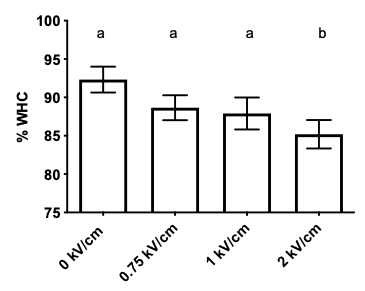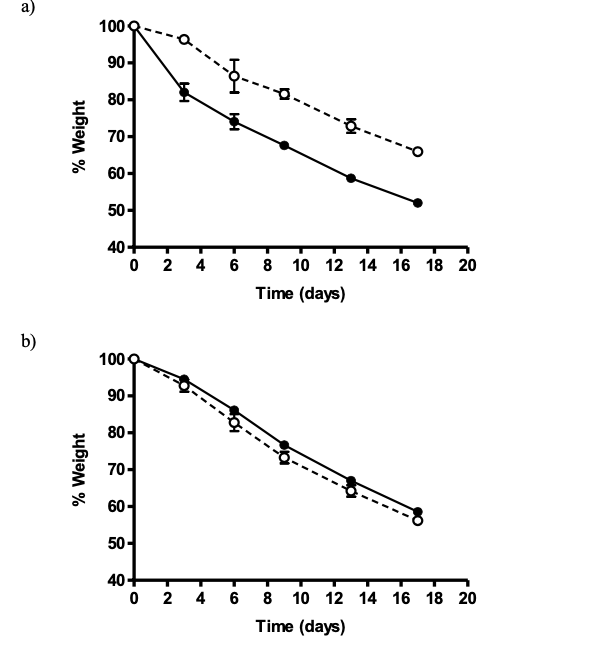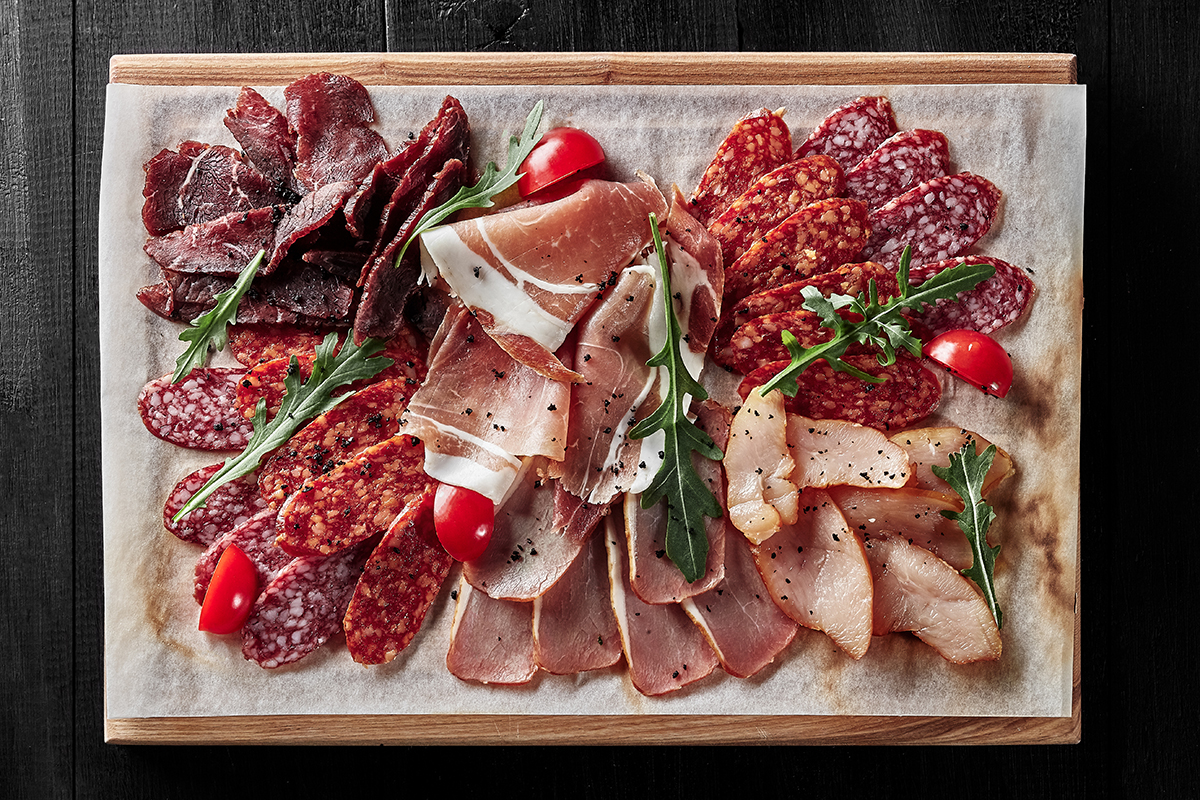The experiment was set up to examine the effect of PEF to accelerate the drying time of pork loins and Spanish cured sausages.
The organoleptic properties of cured meat products are highly dependent on the maturation/drying processes. In order to improve these characteristics, drying at low temperatures is sought, which implies high processing times. The application of PEF, causing membrane electroporation, would accelerate the water transfer process and, therefore, shorten the drying times.
Purpose of the trial
The objective of this investigation was to study the influence of the most relevant PEF treatment parameters on meat cells’ electroporation in order to determine the potential of PEF for accelerating the meat-curing processes, such as in Spanish raw-cured sausage manufacturing.
Main conclusions
• Application of PEF to pork meat increased meat drying rates. However, its effect was highly dependent on the treatment parameters (electric field strength, pulse width, and specific energy).
• Mincing size also influenced the effectiveness of PEF for accelerating meat drying.
• The water barrier effect exerted by the casing in which the sausages are stuffed would limit the effect of PEF of meat drying rates.
Methodology
In a first study, the influence of PEF on drying processes was evaluated in pork loin samples (6 g). Water Holding Capacity (WHC) was used as an indirect index of muscle cell electroporation. PEF parameters investigated were the electric field strength (from 0.1 to 5.0 kV/cm), pulse width (from 10 to 200 μs), number of pulses (variable according to treatment intensity, from 0 to 200) and specific energy (from 0 to 56 kJ/kg). In these cases, weight loss was determined to evaluate the PEF effect on drying process at 4 ºC.
In the second part, the previously obtained results were validated using Spanish dry-cured sausages as a model food. Drying curves of sausages prepared using PEF treated and control (non-PEF treated) meat were obtained and modelised. To fit the drying curves and calculate kinetic parameters, two mathematical models were compared: one based on Fick’s equation, which describes mass diffusion processes; and the Geeraerd, Herremans, and Van Impe model, which describes decreasing asymptotic graphics.
This was investigated
Graphical abstract of the experimental setup (pdf)
Studies and results:
1. Electroporation of muscle cells
- The WHC value decreased with electric field strength, indicating that cells were electroporated.

2. Influence of the orientation of muscle fibres in meat drying
- Weight loss increased when PEF treatments were applied.
- No significant weight loss differences were observed for the samples treated perpendicularly or in parallel to the field strength.
3. Influence of PEF parameters on meat drying
- Electric field strength: an increase in water loss of 60.4% (as compared to non-treated samples) was measured when applying 1 kV/cm.
- Pulse width: statistically significant differences were observed when pulses of 200 μs were applied.
- Specific energy: the highest level of water loss (37.7%) was achieved applying 28 kJ/kg.
4. Influence of sample mincing size on meat drying
- The Geeraerd, Herremans and Van Impe model was chosen for describing the drying curves.
- The highest drying rate was obtained with a mincing size of 4 mm.
5. PEF-assisted Spanish cured sausage drying
- The casing in which the sausages are stuffed limits the effect of PEF of meat drying rates.
- In PEF-treated sausages without casing a 41-47 % reduction in drying time was achieved.
- In sausages stuffed in natural pork casing, no statistically differences were observed between PEF and non-PEF treated samples.

| Title | Author(s) | Year | |
|---|---|---|---|
| Potential of Pulsed Electric Fields for the preparation of Spanish dry-cured sausages | Leire Astráin-Redín, Javier Raso, Guillermo cebrián & ignacio Álvarez | 2019 | Go to publication |
